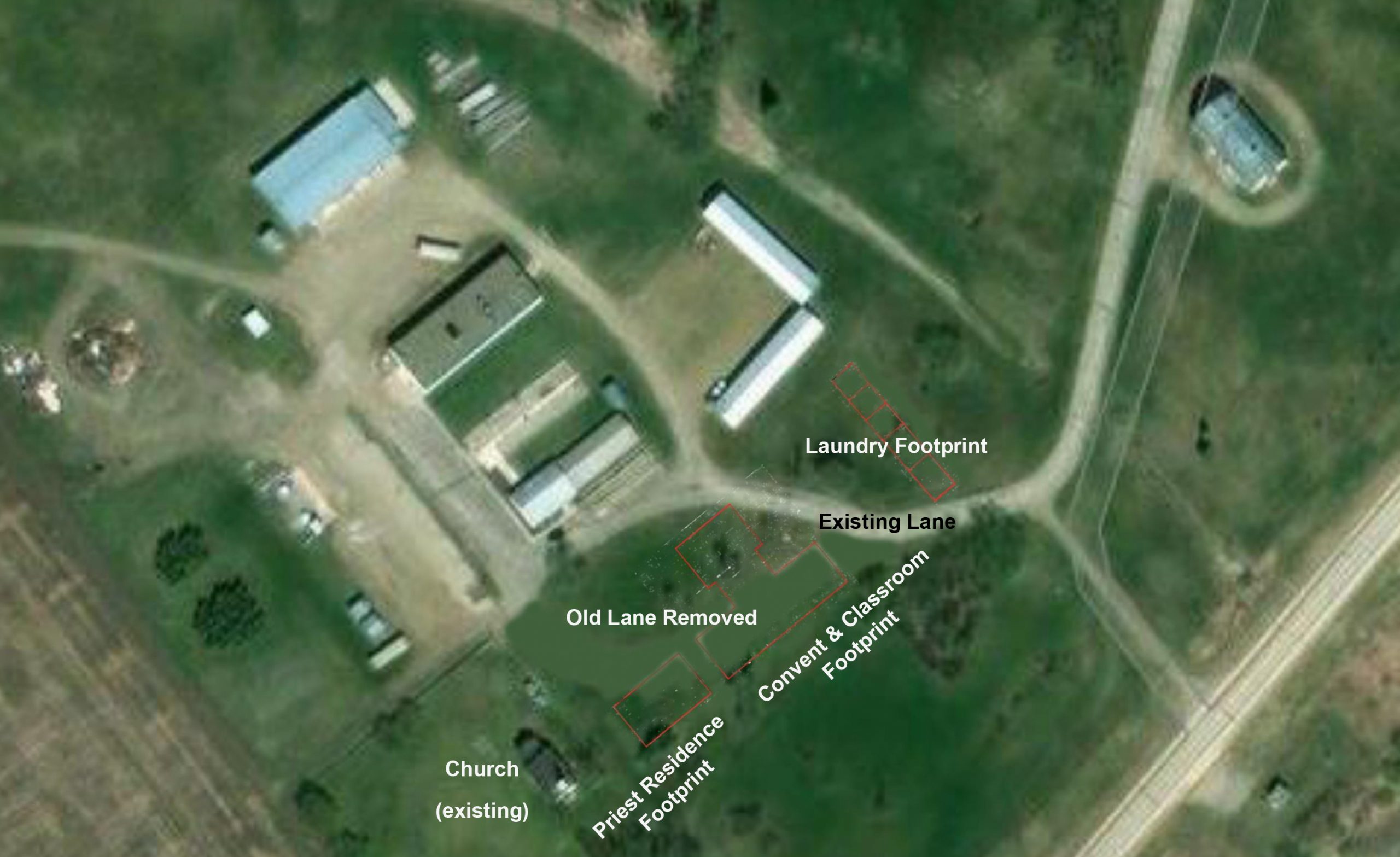Peace River Receives Grant for Work Commemorating Residential School
December 2, 2020
Once the site of a residential school, St. Augustine Mission, also known as Smoky Forks and Forks Mission, will receive some upgrades to historical signage and landscaping thanks to a federal grant.
Ten interpretive panels will be installed at the site located near the Peace River Correctional Centre. Additionally, significant landscaping will be done to mark the footprints of three former structures on the site, including the Priests’ Residence, the Convent/School, and the Laundry House.
Collectively these upgrades are intended to increase awareness and commemorate the history and legacy of residential schools, as well as honour residential school survivors, their families, and communities by providing an opportunity for land-based learning for locals and visitors alike.
Majority funding for this project is being provided by the Government of Canada though the Department of Canadian Heritage Celebration and Commemoration Program.
The project itself is a partnership of the Peace Regional Aboriginal Interagency Committee, The Peace River Museum, Archives and Mackenzie Centre, and the Town of Peace River. Additional financial support is provided by the Sir Alexander Mackenzie Historical Society. This project is additionally supported by the Municipal District of Peace No. 135 and the Government of Alberta.

Background:
- The St. Augustine Roman Catholic Mission was established in 1888, on the Shaftesbury Trail.
- It was a Federally funded residential school 1907.
- After the Federal money was transferred to Sturgeon Lake Resident School, the residential school continued at St. Augustine Mission and was attended by First Nation, Metis, and settler children until the school closed in Dec 1950.
- Site originally contained 13 buildings, only the Church (1894) remains standing today and one barn (1930s).
We wish to acknowledge the work of Wendy Goulet and the Peace River Aboriginal Interagency Committee in this project.

Peace River reçoit une subvention pour son travail commémorant un pensionnat
2 décembre 2020
Jadis le site d’un pensionnat, la Mission St-Augustine, aussi connue sous les noms de la Mission Smoky Forks et la Mission Forks, recevra quelques améliorations à ses signes historiques et ses aménagements paysagers, grâce à une subvention fédérale.
Dix panneaux interprétatifs seront installés sur le site de la Mission, tout près du Centre Correctionnel de Peace River. De plus, des améliorations paysagères d’envergure auront lieu afin de marquer les empreintes de trois anciennes structures du site, soit la Résidence sacerdotale, l’école/couvent, ainsi que la buanderie.
Il est espéré que, collectivement, ces rénovations augmenteront la sensibilisation, tout en commémorant l’histoire et l’héritage des pensionnats. En outre, cette subvention vise à honorer les survivants, leurs familles et communautés en offrant une opportunité d’apprentissage par la terre, autant pour les gens locaux que pour les visiteurs.
La majorité du financement provient du Gouvernement du Canada à travers le Programme des célébrations et commémorations du Département du patrimoine canadien.
Le projet est un partenariat entre le Comité Interinstitutions Aborigène de la Région de Peace, le Musée de Peace River, Archives et Centre Mackenzie, et la municipalité de Peace River. Le support financier additionnel est fourni par la Société Historique Sir Alexander Mackenzie. Ce projet est également supporté par le District Municipal de Peace #135, et le Gouvernement de l’Alberta.

Contexte historique:
- La Mission St-Augustine fut établie en 1888, sur le chemin Shaftesbury.
- Elle était un pensionnat subventionné par le gouvernement fédéral jusqu’en 1907
- Après que les fonds fédéraux soient transférés au pensionnat de Sturgeon Lake, la Mission St-Augustine a été fréquentée par des enfants d’origine de Première nation, Métisse et colonial, jusqu’à la fermeture de l’école en 1950.
- Le site contenait, à son origine, 13 bâtiments. De ceux-ci, seules l’Église (1894) et une grange (1930) sont encore bien conservé.
Nous souhaitons souligner le travail de Wendy Goulet et du Comité interinstitutions Aborigène de Peace River dans le cadre de ce projet.


